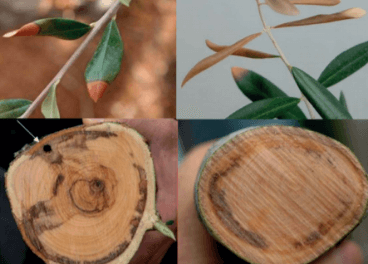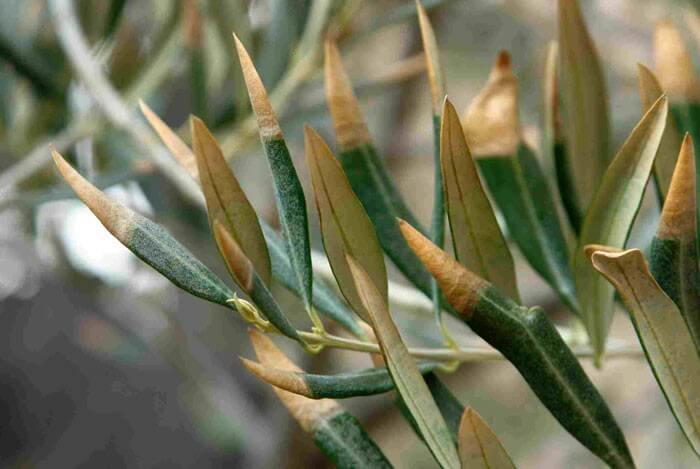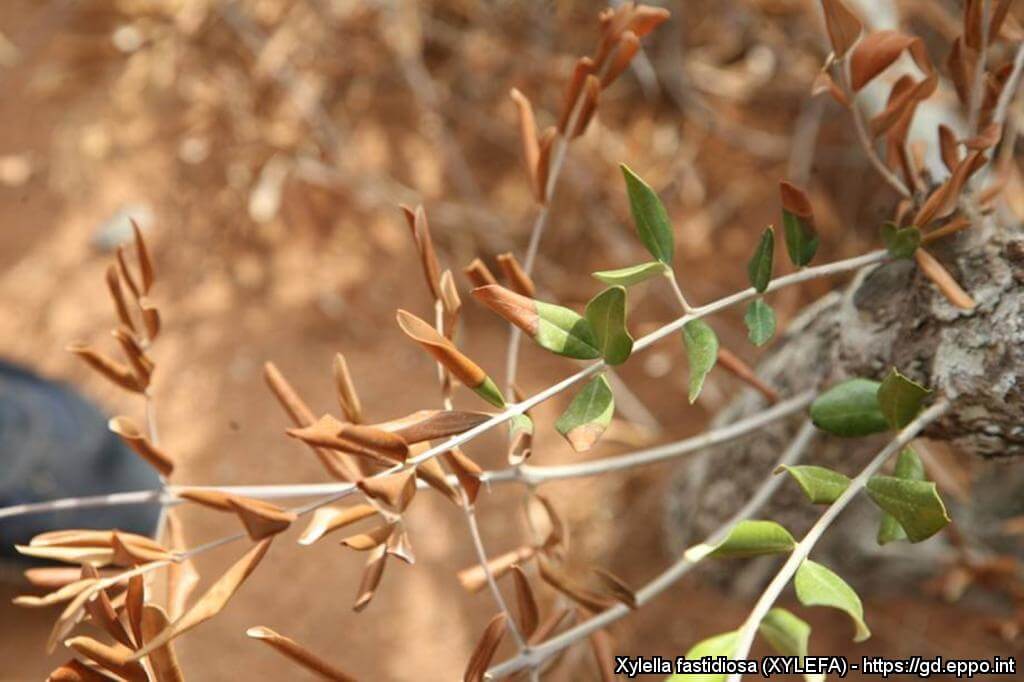
Olivo de verdeo / almanzara
How to recognize and combat Xylella or Ebola in olive trees
Xylella Or Olive Ebola
Bacterium
Type:
Risk to the plant:
CRITICAL
Xylella Fastidiosa
Pathogen:

Virus
WHO CAUSES IT?
Xylella fastidiosa is a phytopathogenic bacteria that affects a variety of plants, including the olive tree. This bacteria spreads mainly through insect vectors such as leafhoppers, which feed on plant sap and can transmit the bacteria from one plant to another. Once in the plant, Xylella fastidiosa colonizes the vascular system, blocking the vessels that conduct water and nutrients. This leads to the appearance of water stress symptoms and can ultimately cause plant death.
SYMPTOMS
The disease known as Xylella or olive ebola is caused by the infection of Xylella fastidiosa in olive trees. Symptoms of the disease include wilting and dieback of branches, leaf necrosis, premature leaf drop, and reduced olive production. As the disease progresses, it can cause complete death of the tree.
• Wilting and dieback of branches.
• Leaf necrosis, especially on the edges of the leaves.
• Premature fall of leaves.
• Reduction in olive production.
• Total death of the tree in severe cases.



DEVELOPMENT CONDITIONS
Temperature:
20°C - 30°C
Humidity:
40% - 80%
HOW IS IT SPREAD?
Vectors insects, contaminated tools, movement of infected plants.
HOW TO ELIMINATE IT?
Home treatments
There are no home treatments
Natural allies
Chemical treatments
There are no treatments for this disease. Treatments are directed at the insect vectors that transmit it. See insect treatments.
RECOMMENDED PRODUCTS TO ELIMINATE THE PEST
Sponsored link
Sponsored link
Sponsored link
Sponsored link
Sponsored link
Sponsored link
Sponsored link
Sponsored link
Sponsored link
Effective against all types of fungi
Sponsored link
Sponsored link
Sponsored link
Sponsored link
Sponsored link
Sponsored link
Sponsored link
REPELLENT PLANTS
RECOMMENDATIONS
















































